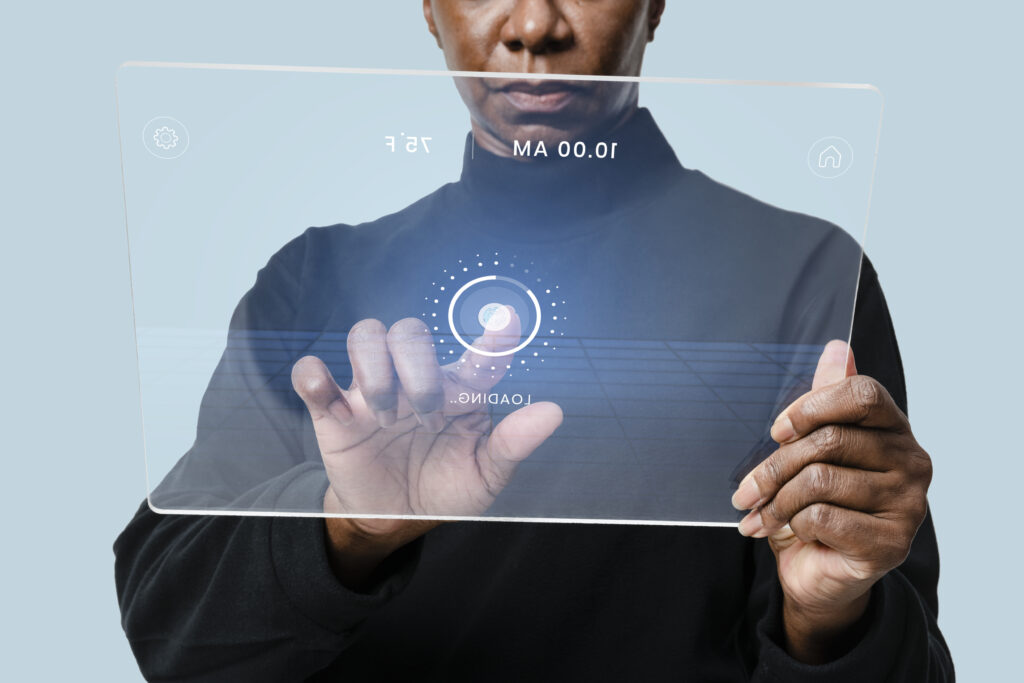Digital Diplomacy: Navigating the New Frontier

In today’s interconnected world, diplomacy is no longer confined to closed-door meetings and official communiqués. The rise of digital platforms has revolutionized how nations interact with each other and how governments engage with their citizens. This shift towards digital diplomacy has opened up new avenues for communication, transparency, and influence, shaping the future of international relations.
A Digital Playground for Diplomacy
Digital platforms such as social media, blogs, and online forums have become the new battlegrounds for diplomacy. Governments and diplomats are increasingly using these platforms to reach out to a global audience, bypassing traditional media channels and directly engaging with people from different cultures and backgrounds. This direct interaction allows for a more nuanced and personalized approach to diplomacy, where messages can be tailored to specific audiences and feedback can be received in real-time.
The Power of Social Media in Diplomacy
Social media, in particular, has emerged as a powerful tool for diplomacy. Platforms like Twitter, Facebook, and Instagram have become essential channels for governments to communicate their policies, showcase their culture, and engage in public diplomacy. Leaders and diplomats now have direct access to millions of people around the world, enabling them to shape public opinion and influence international discourse like never before.
Engaging the Digital Citizenry
Digital diplomacy is not just about governments talking to each other; it’s also about governments engaging with their own citizens in new and innovative ways. Through digital platforms, governments can provide information, gather feedback, and mobilize support for their policies in ways that were previously impossible. Citizens, in turn, can use these platforms to voice their opinions, participate in public debates, and hold their governments accountable.
The Challenges of Digital Diplomacy
While digital diplomacy offers numerous opportunities, it also presents unique challenges. The speed and reach of digital communications mean that messages can spread rapidly and uncontrollably, leading to potential misunderstandings or diplomatic incidents. Moreover, the lack of regulation and oversight on digital platforms can make it difficult to ensure the accuracy and authenticity of information, leading to the spread of misinformation and fake news.
Looking to the Future
As digital diplomacy continues to evolve, it is clear that its impact on international relations will only grow stronger. Governments and diplomats will need to adapt to this new digital landscape, learning how to harness its potential while mitigating its risks. By embracing digital platforms and leveraging their power effectively, diplomacy can become more inclusive, transparent, and responsive to the needs of an increasingly interconnected world.
Tips for Running Effective Digital Diplomacy Campaigns

Digital diplomacy has become an essential tool for modern diplomats, allowing them to reach a global audience and shape international discourse. Here are some tips for running effective digital diplomacy campaigns that can help you make a meaningful impact in the digital realm.
1. Know Your Audience
When planning a digital diplomacy campaign, it’s essential to understand your target audience. Who are you trying to reach, and what are their interests and concerns? By tailoring your messages to resonate with your audience, you can increase the effectiveness of your campaign and foster meaningful engagement.
2. Leverage Social Media Wisely
Social media platforms like Twitter, Facebook, and Instagram are powerful tools for digital diplomacy. However, it’s essential to use them wisely. Make sure your content is engaging, relevant, and shareable. Use hashtags to increase visibility and encourage interaction with your audience.
3. Be Authentic and Transparent
Authenticity and transparency are key to building trust in digital diplomacy. Be honest and open in your communications, and avoid using overly scripted or formal language. Show the human side of diplomacy by sharing behind-the-scenes stories and insights that give your audience a glimpse into your world.
4. Engage in Two-Way Communication
Digital diplomacy is not just about broadcasting messages; it’s also about engaging in conversations with your audience. Respond to comments and messages promptly, and actively seek out opportunities to interact with your followers. This two-way communication can help you build relationships and foster a sense of community around your diplomatic efforts.
5. Use Visuals to Tell Your Story
In the digital age, visuals are a powerful way to capture attention and convey messages. Use images, videos, infographics, and other visual content to complement your written posts and make your messages more engaging and memorable.
6. Stay Informed and Adaptable
The digital landscape is constantly evolving, so it’s essential to stay informed about the latest trends and best practices in digital diplomacy. Be willing to adapt your strategies based on new developments and feedback from your audience.
7. Measure Your Impact
Finally, don’t forget to measure the impact of your digital diplomacy campaigns. Use analytics tools to track engagement metrics such as likes, shares, and comments, and use this data to refine your strategies and improve your future campaigns.
Case Studies of Successful Digital Diplomacy Initiatives
In the world of digital diplomacy, success stories abound, showcasing the power of digital platforms to shape international relations. Let’s take a closer look at some inspiring case studies that demonstrate the effectiveness of digital diplomacy in action.
1. The Canadian Digital Diplomacy Strategy
Canada has been at the forefront of digital diplomacy, leveraging social media and digital platforms to promote its foreign policy objectives. One notable initiative is the Canadian Digital Diplomacy Strategy, which aims to enhance Canada’s global influence through digital engagement. The strategy emphasizes the use of social media, digital storytelling, and innovative technologies to connect with audiences around the world. By embracing digital diplomacy, Canada has been able to amplify its voice on the global stage and engage with audiences in new and meaningful ways.
2. The UK’s Global Conversation Campaign
The United Kingdom’s Foreign and Commonwealth Office launched the Global Conversation campaign, a digital diplomacy initiative that aimed to engage with the public on foreign policy issues. Through a series of online discussions, social media campaigns, and interactive events, the UK government invited people to share their views and ideas on global challenges and opportunities. This initiative not only helped the UK government gain valuable insights into public opinion but also fostered a sense of inclusivity and transparency in its foreign policy approach.
3. The State Department’s Twitter Diplomacy
The U.S. State Department has been using Twitter as a key platform for digital diplomacy, engaging with audiences around the world on a wide range of issues. One notable example is the #FreeIranianProtesters campaign, where the State Department used Twitter to raise awareness about human rights abuses in Iran and show support for the Iranian people’s right to protest. By leveraging Twitter’s reach and immediacy, the State Department was able to amplify its message and reach a global audience, demonstrating the potential of social media for digital diplomacy.
Predictions for the Future of Digital Diplomacy
As we look ahead, the future of digital diplomacy appears to be both exciting and challenging, with new technologies and trends shaping the way governments engage with the world. Here are some predictions for how digital diplomacy might evolve in the coming years.
1. Embracing AI and Automation
One of the most significant trends we can expect to see in the future of digital diplomacy is the increased use of artificial intelligence (AI) and automation. These technologies have the potential to revolutionize diplomatic efforts by streamlining processes, analyzing vast amounts of data, and even facilitating multilingual communication. AI-powered chatbots, for example, could be used to provide instant and personalized responses to queries from citizens or foreign counterparts, enhancing the efficiency of diplomatic communications.
2. Virtual Diplomacy and Telepresence
With the advancement of virtual reality (VR) and augmented reality (AR) technologies, we may see the emergence of virtual diplomatic missions and telepresence initiatives. Diplomats could use VR to participate in virtual meetings and events, allowing for more immersive and interactive diplomatic engagements without the need for physical travel. This could not only reduce costs and carbon emissions associated with travel but also enable diplomats to engage with a broader range of stakeholders in new and innovative ways.
3. Enhanced Data Analytics and Predictive Modeling
In the future, we can expect to see a greater emphasis on data analytics and predictive modeling in digital diplomacy. Governments and diplomats will likely rely more on data-driven insights to understand public sentiment, identify emerging trends, and predict potential conflicts or opportunities. Advanced analytics tools could help diplomats make more informed decisions and craft more targeted diplomatic strategies, ultimately increasing the effectiveness of digital diplomacy efforts.
4. Challenges and Opportunities
While the future of digital diplomacy holds great promise, it also comes with its own set of challenges and opportunities. Cybersecurity, for example, will be a critical concern as governments seek to protect their digital assets and communications from cyber threats. Additionally, the digital divide between countries and communities could widen, posing challenges for inclusive digital diplomacy efforts. However, advancements in technology also present opportunities for greater transparency, inclusivity, and efficiency in diplomatic engagements.
Book Appointment
Let us handle all your Public Affairs with our sound client-business objectives and well-informed strategies
